Abstract
OBJECTIVE: Health advocates increasing y use the news media to educate the public. However, little is known about what motivates individuals to pay attention to health news. This study investigated which characteristics of TV health news stories attract viewer interest. METHODS: The authors surveyed airport patrons, the audience of a public health symposium, and municipal jurors, asking which attributes of TV heath news stories encouraged interest and which attributes discouraged interest. The authors ranked mean responses and compared them using Spearman rank correlations, RESULTS: The rankings assigned by the three samples were highly correlated. Respondents reported being most attracted to health stories about personally relevant topics. Interestingly, they also reported that sensational story elements such as "showing a bloody or injured person" and "being action packed" did not substantially influence their attention. CONCLUSIONS: This study suggests that viewers, regardless of their level of health knowledge, value the same attributes in TV health news stories. Emphasizing the personal relevance of health topics appears to be a viable strategy to capture viewer interest. Conversely, the tendency of broadcast news to sensationalize stories may be distracting in the case of health news.
Full text
PDF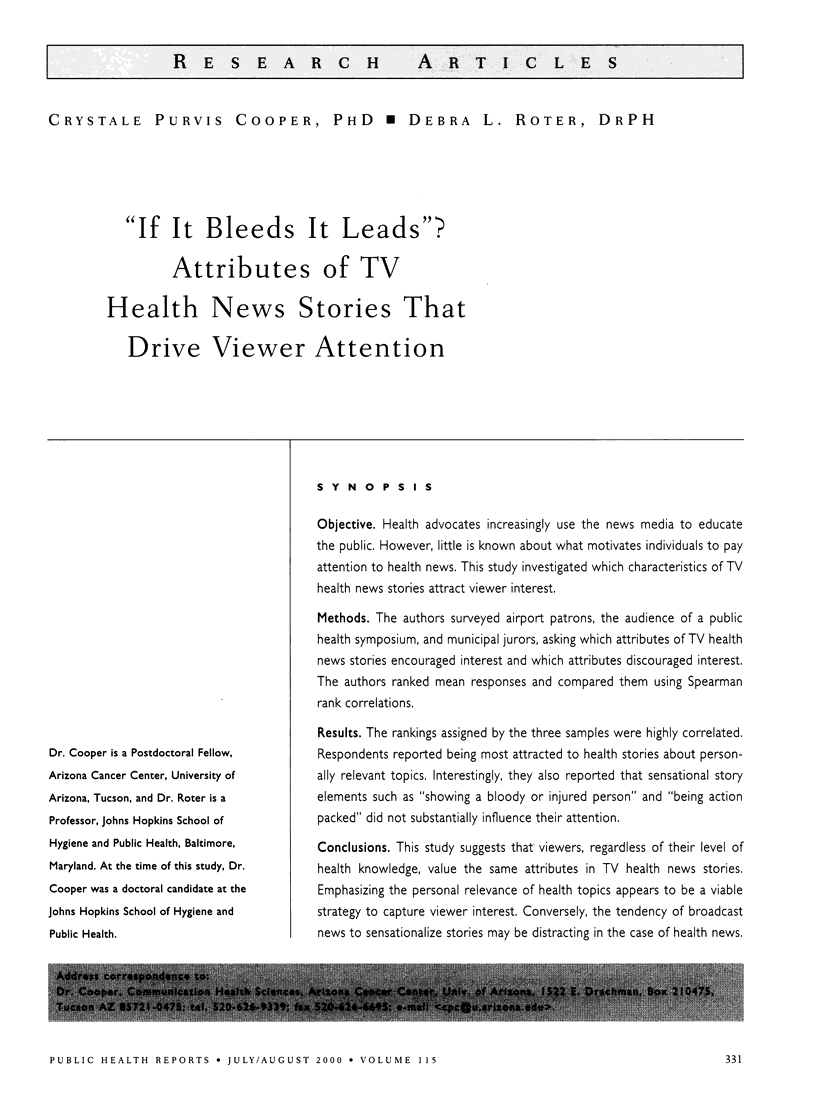
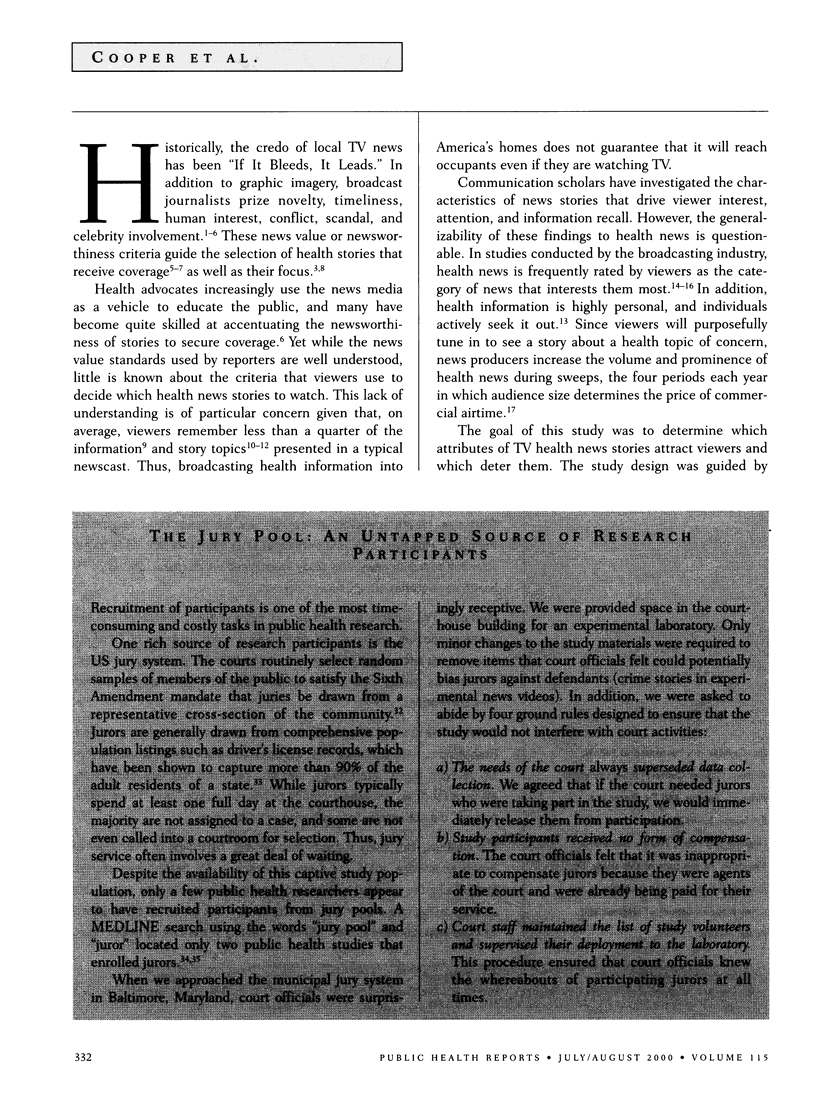
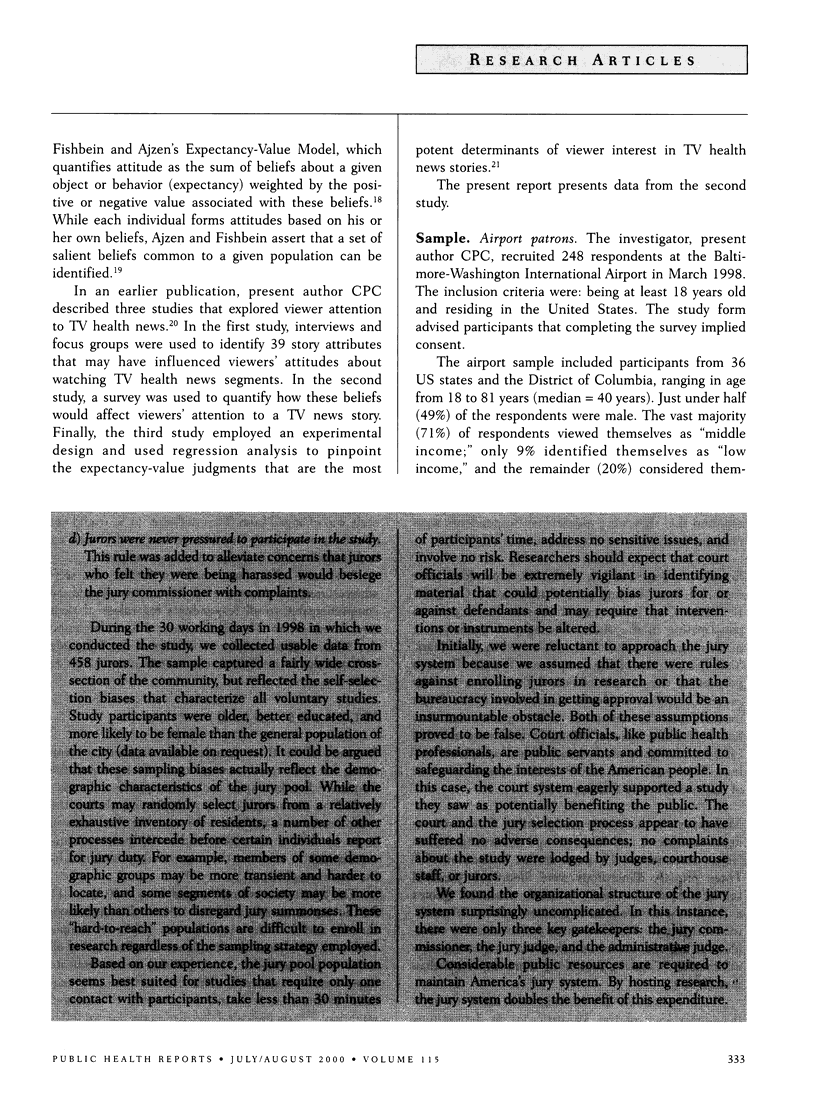
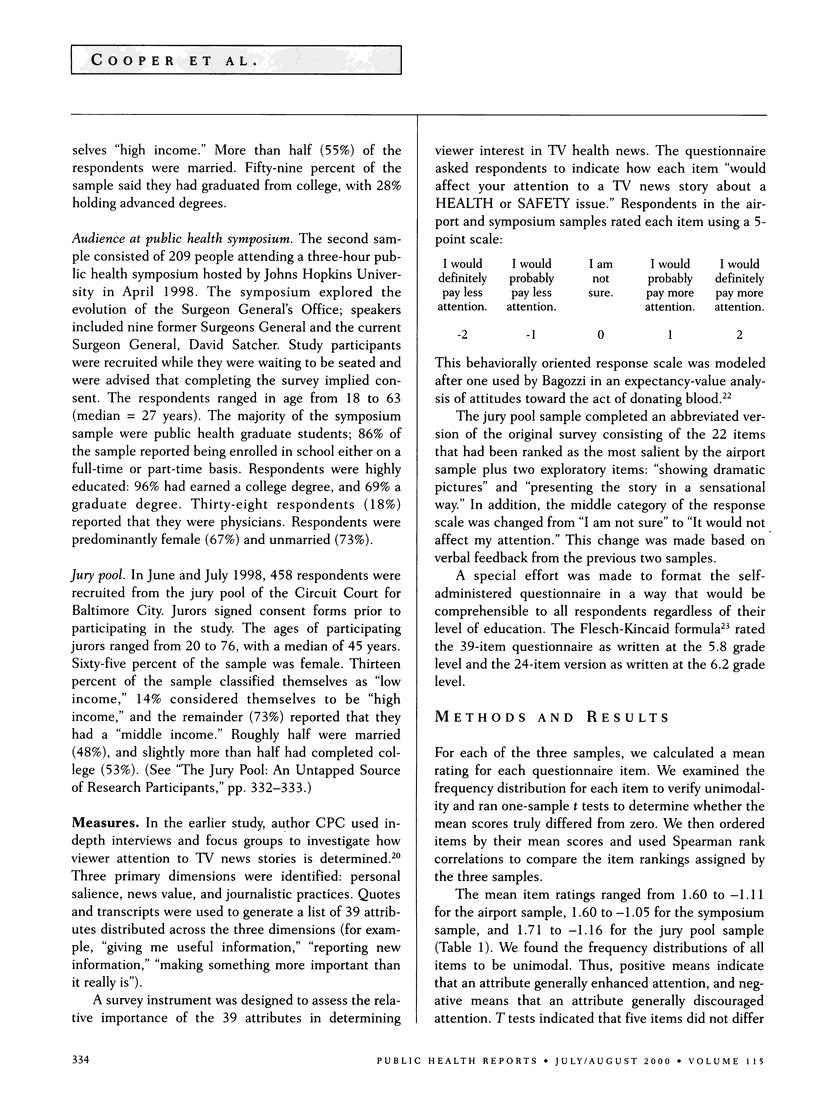
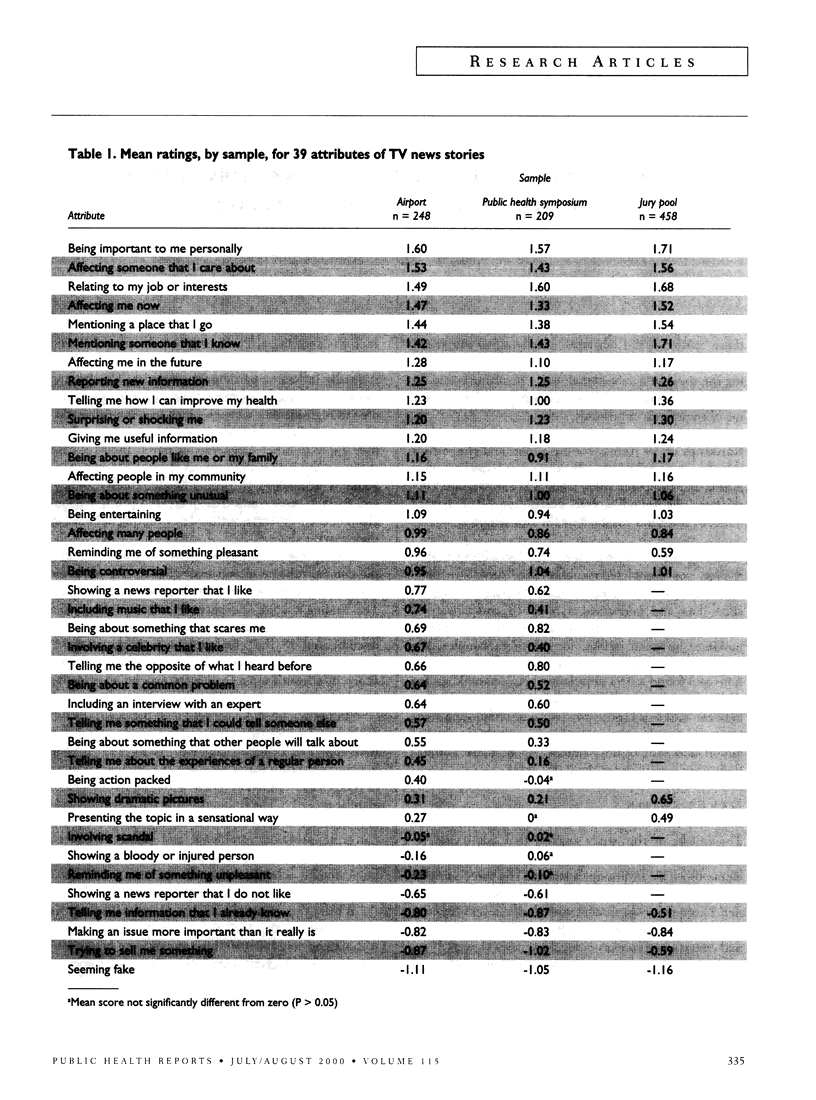
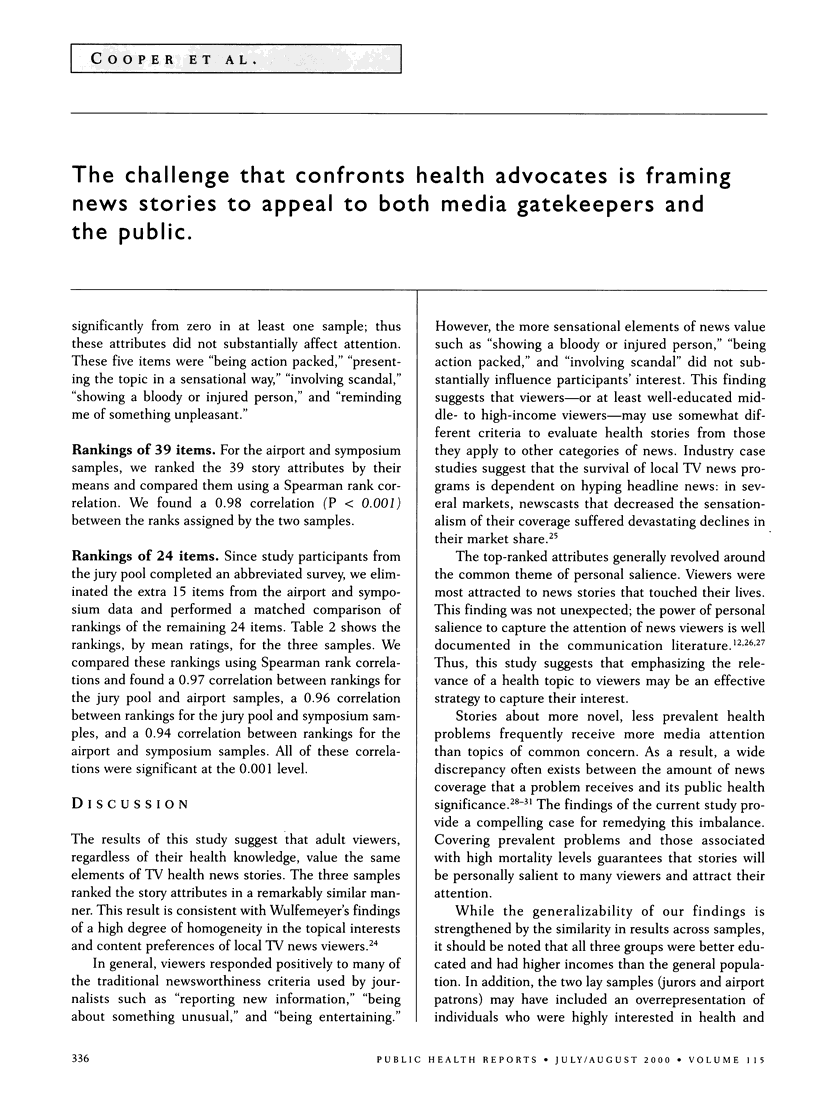
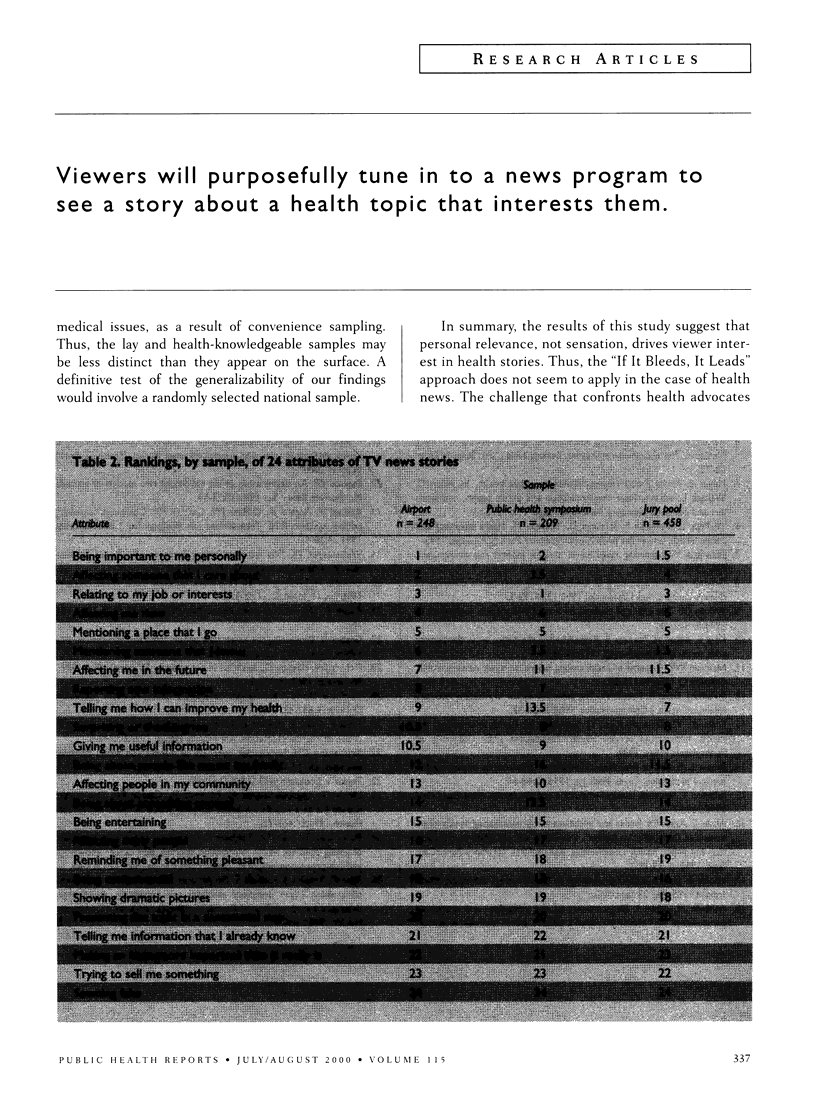
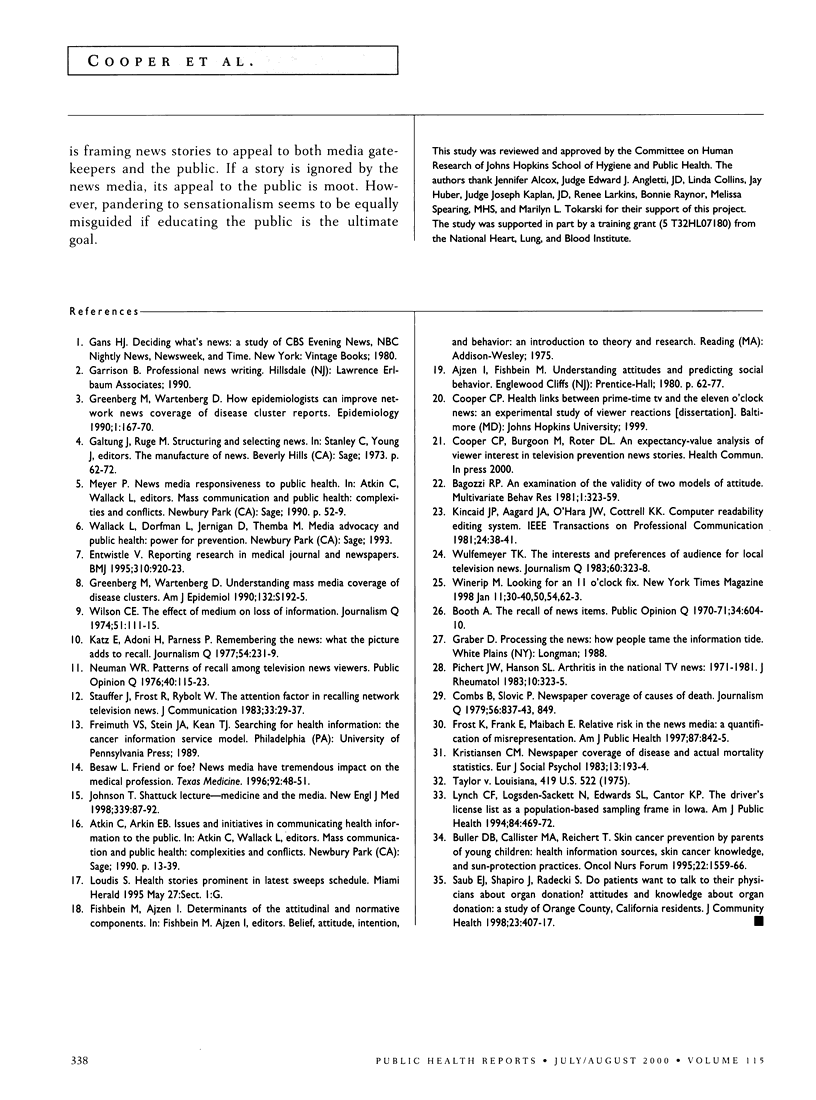
Selected References
These references are in PubMed. This may not be the complete list of references from this article.
- BeSaw L. Friend or foe? News media have tremendous impact on the medical profession. Tex Med. 1996 Feb;92(2):48–51. [PubMed] [Google Scholar]
- Buller D. B., Callister M. A., Reichert T. Skin cancer prevention by parents of young children: health information sources, skin cancer knowledge, and sun-protection practices. Oncol Nurs Forum. 1995 Nov-Dec;22(10):1559–1566. [PubMed] [Google Scholar]
- Entwistle V. Reporting research in medical journals and newspapers. BMJ. 1995 Apr 8;310(6984):920–923. doi: 10.1136/bmj.310.6984.920. [DOI] [PMC free article] [PubMed] [Google Scholar]
- Frost K., Frank E., Maibach E. Relative risk in the news media: a quantification of misrepresentation. Am J Public Health. 1997 May;87(5):842–845. doi: 10.2105/ajph.87.5.842. [DOI] [PMC free article] [PubMed] [Google Scholar]
- Greenberg M., Wartenberg D. How epidemiologists can improve television network news coverage of disease cluster reports. Epidemiology. 1990 Mar;1(2):167–170. doi: 10.1097/00001648-199003000-00016. [DOI] [PubMed] [Google Scholar]
- Johnson T. Shattuck lecture--medicine and the media. N Engl J Med. 1998 Jul 9;339(2):87–92. doi: 10.1056/NEJM199807093390206. [DOI] [PubMed] [Google Scholar]
- Lynch C. F., Logsden-Sackett N., Edwards S. L., Cantor K. P. The driver's license list as a population-based sampling frame in Iowa. Am J Public Health. 1994 Mar;84(3):469–472. doi: 10.2105/ajph.84.3.469. [DOI] [PMC free article] [PubMed] [Google Scholar]
- Pfister-Goedeke L., Stauffer U. G. Thyroid carcinoma in childhood. Prog Pediatr Surg. 1983;16:29–37. [PubMed] [Google Scholar]
- Pichert J. W., Hanson S. L. Arthritis in the national TV news: 1971-1981. J Rheumatol. 1983 Apr;10(2):323–325. [PubMed] [Google Scholar]
- Saub E. J., Shapiro J., Radecki S. Do patients want to talk to their physicians about organ donation? Attitudes and knowledge about organ donation: a study of Orange County, California residents. J Community Health. 1998 Dec;23(6):407–417. doi: 10.1023/a:1018754023705. [DOI] [PubMed] [Google Scholar]


